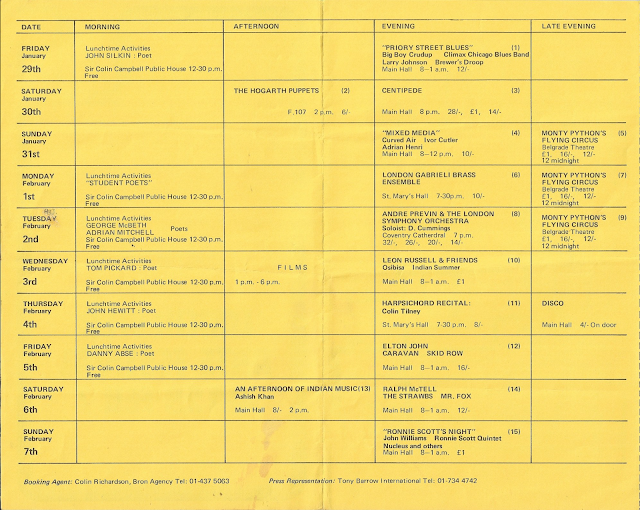Oxford in the early '70s was very different from what I imagine it is now. This is the tale of my time in this august institution.
Table of Contents:
Episode 03 - Accommodation.
Year one.
It's not all "Dreaming Spires" or "Brideshead Revisited" even though Evelyn Waugh attended Hertford College and the first section of the book is set in a college remarkably similar. The college is very photogenic, especially with its Bridge of Sighs, but the interiors of the student rooms were much more prosaic.
On a recent visit to Oxford with friends, as an alumni I was able to get a back stage pass to show them around the interior even though the college was closed to visitors.
In the first year everybody got to stay in hall as there were enough rooms for all the freshers. This is the quad known as the Old Buildings. The entrance from Catte Street is through the lodge on the left of the picture, the spiral staircase goes up to the dining room, above the lodge, and to the MCR (Middle Common Room).
In the corner of this quad is another staircase that led up to my room on the top floor, to the right of the spiral staircase, but on the street side. My room was clearly one half of what had once been a suite comprising a bedroom and living room but no way to tell which was which. My room was the one on the right of this photo:
There would have originally been an outer front door to the rooms, where you can see the opening. This would have been made of oak and gives rise to the phrase “sporting your oak”. A closed outer door indicated that either you were away or you were in and not to be disturbed because you were studying hard or you had a guest. My oak must have been removed when the rooms were divided, but there are still plenty of others along the rest of the corridor.
The room was fairly basic. Bed, table, chair, electric fire. There might have been other chairs but I do not recall. The wall was adorned with posters - Blu-Tack was allowed. The window was on the Catte Street side, and looked out over the Sheldonian, where graduation ceremonies are held.
There was a shared bathroom for our floor but no kitchen anywhere. In my room I had a kettle and a few mugs, a jar of Nescafé and a tin of powdered milk for entertaining, as did everyone else.
My friend Mike lived on a staircase in the New Buildings which lacked running water so every morning the scout (as the housekeepers are termed) would bring up a jug of hot water for his morning ablutions so that he did not have to trek all the way downstairs to the communal bathroom. Looking back that seems a little bizarre.
Hertford College locked their gates at midnight, although to be fair, they left open a basement window into the laundry room and did provide a ladder, so if you were out after midnight you could climb down and crawl in through the window. As my friends lived in the other quad we often traversed that iconic bridge between the two quads.
Year Two.
At the end of first year exams, those who did particularly well, known as scholars, were granted the privilege of a second year in hall. My friend Mike was bright and did well enough to get his second year in hall whilst the rest of us had to seek alternative accommodation.
For the Michaelmas (autumn) term I found a landlady in Denmark Street who provided bed and breakfast for students. It was pretty dire. I had a bedroom and she provided breakfast which consisted of some fairly cheap bacon with a little white bony bits in. I was not allowed visitors so had to go out in order to meet up with my friends. She had a son who was learning to play keyboards, practising on an electronic organ with the vibrato set to maximum, pretty awful. It was pretty obvious I was again going to have to find alternative accommodation.
Vince and Pete were able to get rooms in a pair of Victorian terraced houses owned by Hertford College at 134 and 136 Walton Street which is where we spent much of our time. There was an unoccupied bedroom, used by the cleaners as a storeroom, which seemed a bit wasteful and I negotiated with the college to relocate their mops and buckets out into the cupboard under the stairs and I moved in after Christmas. One of the first things I did was paint the walls orange. That was my accommodation for the rest of the second year. It was all very sordid with a strong “The Young Ones” vibe about it.
Year three.
Over the summer, the parents of a fellow student bought a house in Stratford Street not too far from the town centre. The fellow student, also called Mark, had the use of the huge through lounge at the front of the house as his bedroom / living room. Mike and I moved in each with our own bedroom and use of the communal breakfast room and kitchen. So much nicer than Walton Street.
Year four.
I continued to live in Stratford Street. Since it was the only house with shared space Vince and Pete were often round there as we sat around the kitchen table. It was just like living in a normal house not a picturesque college nor a squalid student shared house. It was there I learned to cook and where we held our first dinner party.
Afterwards.
I stayed on in Oxford after university and became the lodger with friends who lived in West Street, Osney.








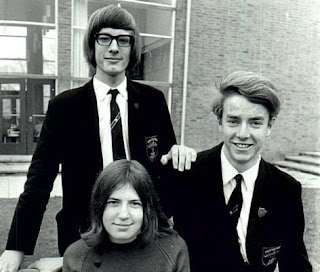





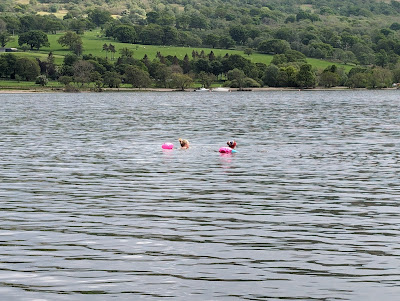
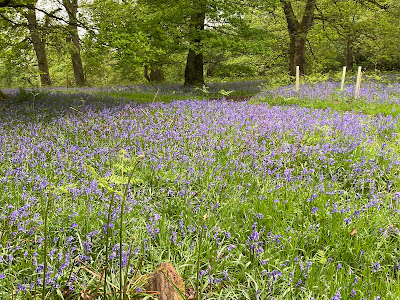
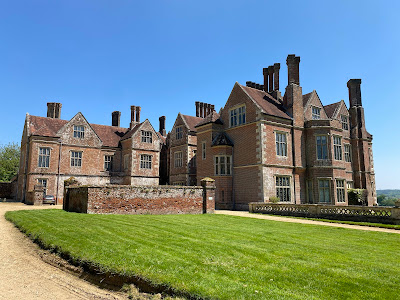




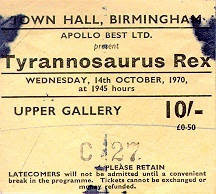

.jpg)
.jpg)
.jpg)
.jpg)
.jpg)
.jpg)
.jpg)
.jpg)
.jpg)
.jpg)





